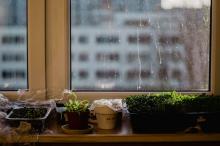pandemic

Tom Sine has served as a futures innovation consultant for various denominations and organizations and Dwight J. Friesen is associate professor of practical theology at the Seattle School of Theology and Psychology. They spoke with Sojourners associate editor Da’Shawn Mosley about their book 2020s Foresight.
Sojourners: What motivated you to write this book?
Tom Sine: Essentially, a desire to write a more compelling book on the changes we’re facing in this pandemic and recession. Churches rarely do forecasting. As a consequence, they’re not ready for the next crunch. They care about their people, but they’re not thinking, “What’s going to happen to them as the recession gets worse?”
Dwight J. Friesen: Our book intends to say, “Listen, we don’t have to be passive bystanders to whatever the new normal’s going to be.” We can be proactive.

WHAT IS REST and what does rest look like during a time of pandemic?
Over the past year, the multiple pandemics we have faced have upended many things, not least of which has been our language. “Essential” has been revealed to be simply another word for “disposable,” with “essential frontline workers” being those whose lives society deems expendable, not irreplaceable. “Safe” has been shown to be so shoddy, subjective, and circumscribed a reality in this country that protesting for Black lives in a pandemic is indeed safer than failing to protest at all. And “rest”—what is rest?
Many of us were struggling with healthy notions and practices of rest prior to COVID-19. Now? “Rest” seems both undefined and unattainable. Biblical images of rest have often been interpreted to emphasize separation, distance, and juxtaposition. For example, Jesus withdrawing from the crowds is often read as modeling rest distinct from the activity, the hubbub, the movement, the people. There is value in this reading of rest, particularly in how it spatially mediates self-care (thus, “retreats”). The thing about pandemics, however, lies in the pan- prefix denoting “all” or “every.” As safer-at-home policies and seemingly limitless racial violence make clear, whether facing COVID or white supremacy, withdrawal to elsewhere is not an option. So, what does rest mean when one cannot “retreat,” spatially or politically or otherwise?
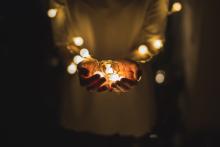
The Centers for Disease Control and Prevention recommend celebrating the holidays only with the people you live with. In this recommendation, I hear a resigned invitation to make it work with what we have. Let us draw lessons from those who have long had to make it work. And in that, I offer a prayer.

There is no guarantee of divine reward for our goodness, nor threat of eternal punishment for our misdeeds. And yet, we are instructed each year, to stop the busyness of our lives, contemplate our own mortality, and make concrete changes based on our conclusions. One might wonder, why bother?

Against the backdrop of the Trump administration’s recent moves to restrict foreign work visas and suspend migration along the Mexican and Canadian borders, many are calling ICE’s order “xenophobic” and another example of the administration’s attempt to exclude non-U.S. citizens.
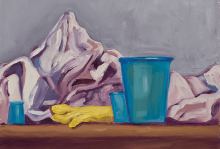
The field, still and breathless,
colored in thirsty hues of yellow,
sits beneath hills just as bleak,
the whole land scoured in disinfectant
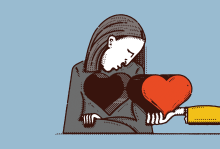
WHILE WE WERE not strangers to grief before the pandemic, these months have been something of a master class. “Each person’s grief is as unique as their fingerprint,” writes grief counselor David Kessler. “But what everyone has in common is that no matter how they grieve, they share a need for their grief to be witnessed.” We are witnesses to one another’s grief.
In our witness, we must acknowledge that loss is not equally distributed. Those of us with privilege have allowed this to happen, and we have much to answer for before God; there is so much that we must work to change. And we don’t have all the time in the world.
I hear empathic grief in parents who can’t spare their children the sudden disruption of their lives and the loss of rites of passage for which they have spent years preparing. And I hear it in children of elder parents who are sick with worry, and in family members of those deemed essential workers who, by choice or compulsion, risk their lives each day. I hear it in the business owners doing everything they can to keep employees on the payroll; in teachers, caregivers, advocates, and in my fellow clergy.
Grief propels us to do whatever we can to make things better and to offer hope and meaning for those we love. Spouses stand outside nursing-home windows with signs that say “I love you”; lines of cars drive by the house of a child celebrating a birthday or graduation; concerts are organized via Instagram; volunteer networks provide food and essential supplies to undocumented families. This is grief mobilized for good, helping us to do something to redeem the time we’re in.
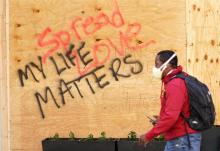
In more than 60 cities across the country, people stopped on June 1 to remember the more than 100,000 people who have died from COVID-19 as part of a National Day of Mourning and Lament.

THOSE ON THE margins live by a different economy. In the film Portrait of a Lady on Fire, the main characters live on the margins of a patriarchal society, and how they relate to one another shows creative care.
In the film, set in 18th-century France, a painter and her subject— a woman scheduled to marry a nobleman in Milan—fall in love. The painter Marianne is hired under the guise of being a walking companion to Héloïse, who, as a symbol of rejection of her forthcoming marriage, refused to sit for a previous portraitist.
After Marianne shows Héloïse a portrait of her she’s completed in secret, Héloïse criticizes it and agrees to sit for Marianne. During these few days of painting, Héloïse’s mother leaves, and the house and its economy rearranges.
Earlier in the film, the three women left in the house had strict roles and responsibilities. Héloïse went for walks, Marianne painted, and the maid Sophie served food. However, as love develops between Héloïse and Marianne, the household leaves behind the strict norms of aristocracy and assumes a much more egalitarian space. In a striking scene filled with role reversal, the lady Héloïse cooks, the artist Marianne pours wine, and the maid Sophie cross-stitches. On the margins of patriarchy, the strict delineations of class are thrown away, and the three share responsibility and care for one another.
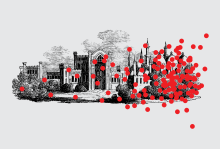
THE HORROR JOHN of Ephesus witnessed in north Africa and Constantinople was so traumatic that it took him three years before he could begin to tell the story.
“Thy judgments are like the great deep,” prayed John of the “cruel scourge” that struck the whole world in 544 C.E., when the plague spread along the trade routes of Europe, the Middle East, and Africa. “Like the two edges of the reaper, it successively passed across the earth, and progressed without stopping,” wrote John. The cities stank with unburied corpses. This sixth century deacon and hagiographer wrote, “The mercy of God showed itself everywhere toward the poor, for they died first while everyone was still healthy enough to ... carry them away and bury them.”
No wonder John drew upon the psalms of lament and the “weeping prophet” Jeremiah for guidance. His congregation was dead or dispersed. To anoint and bury the dead meant contamination. All worship was suspended. The normally scrupulous were hoarding and stealing. And rulers who had overspent on imperial expansion placed impossible economic burdens on the survivors.
And then it all happened again 14 more times throughout north Africa—because pandemics recur in waves, sometimes for as long as 200 years.

Lament, much like our understanding of salvation, ties my suffering with those around me. Christian traditions too distant from experiences of collective marginalization will have trouble penning laments about deliverance from shared sorrow. We need practices of solidarity that reveal those who are unseen in our world starting with the cries in our worship, followed by the witness in our deeds. Yet laments that do not incorporate the collective experience fail to produce practices that could help us survive in spaces of vulnerability and communal loss.

The United States surpassed 100,000 deaths related to the novel coronavirus on Wednesday.
It’s a staggering number representing nearly a third of the 353,011 COVID-related deaths worldwide. In the U.S., more Americans have died of the virus than in the Iraq, Afghanistan, Vietnam, and Gulf wars combined.
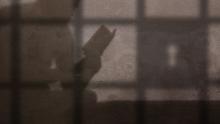
When I began my time at Harvard Divinity School, I considered using my degree towards becoming a prison chaplain. But the more I learned about the exploitation of incarcerated people, their families, and their communities, I realized the pursuit of this ministry must be done in a way that does not reinforce the prison-industrial complex.

At the end of the semester, I snipped an iris at its base, the luminous purple petals reminding me of our history as resilient people in diverse places. During my closing online class, I showed the students a vase of flowers, which my daughter and I had arranged on the wrought-iron table on my deck. Maybe I was subconsciously using perennials that return each year as some obvious metaphor for persistence as they peered at me from their childhood homes in California, Texas, South Carolina, and Maine.

Speculative futurism isn’t mentally escaping into a future that is either far more dystopic than our present or far more utopic than we should expect — nihilistically leaning into our sense of dread and doom, or engaging an escapist fantasy that all will be better someday and calling this ungrounded vision “hope” can both be momentarily comforting. A speculative futurist ecclesiology looks at every fault line exposed by this pandemic alongside every gift and grace it illuminates.

Julia Alvarez is a Dominican American novelist, poet, and recipient of a National Medal of Arts award. Her latest novel, Afterlife, came out in April, and her latest children’s book, Already a Butterfly: A Meditation Story, will be released in June. “A Glimpse of the Garden,” an essay by Alvarez on centering prayer, appears in the June issue of Sojourners magazine. Alvarez spoke with editorial assistant, Hannah Conklin, about her newly released books, the connection between her work and spiritual practices, and finding hope during the COVID-19 pandemic.

Normally, in moments very unlike our present, I could sit and laugh with extended family without fearing that my presence will expose them to an early death. I could get takeout without having to surgically remove the food from its packaging in a designated clean room like it’s a rupturing spleen. I could even venture to a quiet park where I’m passed too closely by a jogger or family of five without having my existential ire erupt out of me like a sermon, delivered only to my weary family on the way home. Most days I was able to have a tough day at work without having to forage for canned beans and toilet paper in surgical gear at our local Kroger as a nightcap.

In the 18 hours after President Trump publicly mused at a news conference about treating the coronavirus by injecting disinfectants such as bleach and Lysol, 30 calls were made to New York City’s poison control about toxic exposure to household cleaners.
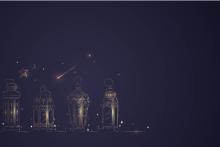
In years past, I’ve invited my non-Muslim friends and community members to visit my mosque for interfaith Iftars. These were opportunities to discuss similarities in fasting across Muslim, Christian, and Jewish traditions, as well as chances to share food and friendship. Now, these interfaith events are impossible. But there are still ways to come together in friendship and solidarity for Muslims during COVID-19 Ramadan.
